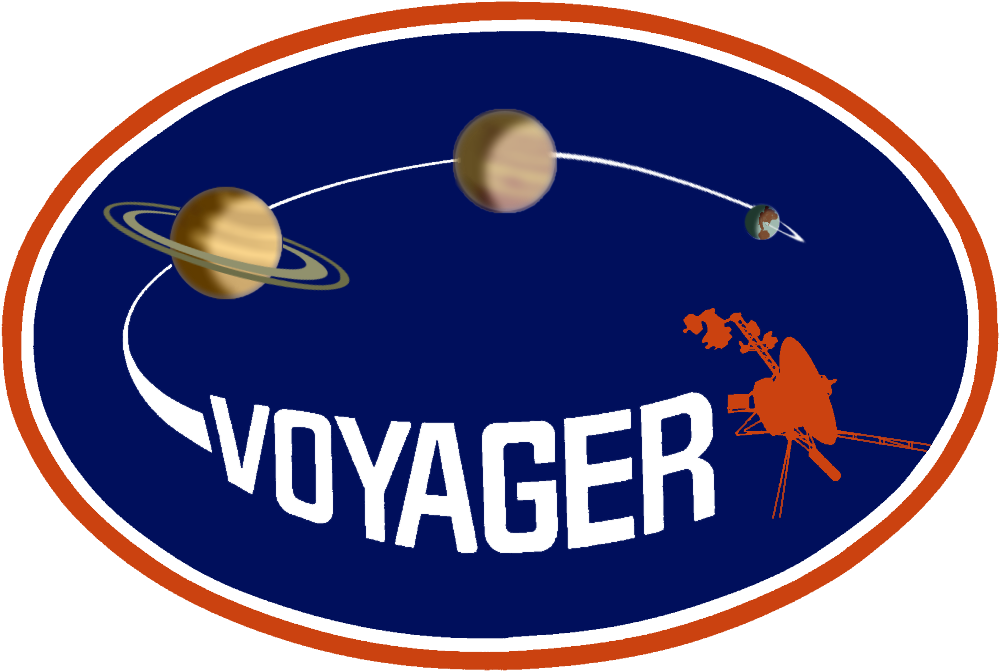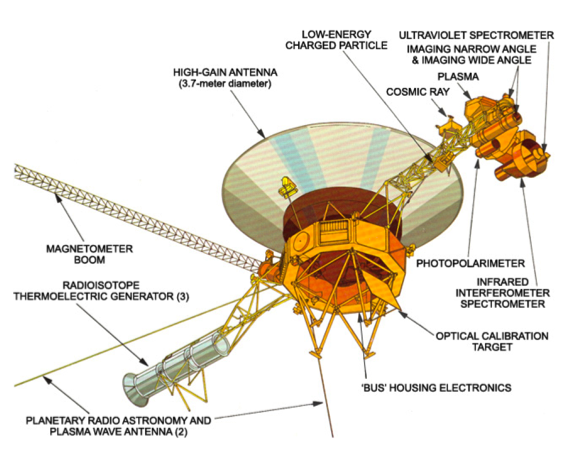- To determine the vertical distribution of cloud particles (atmospheric aerosols) down to an optical depth of unity.
- To obtain information on the particle size, shape, and probable composition.
- To determination of cloud micro- and macrostructures for the major features of the planet.
- To use polarization measurements at large phase angles to confirm or reject the presence of regular crystalline particles of the particle shape/refractive index combinations predicted as possible cloud compositions.

Instrument Characteristics
The Voyager 1 instrument suffered photomultiplier damage; no PPS Voyager 1 data is available.
The Voyager 2 photopolarimeter consists of a 6-inch, f/1.4, Dahl-Kirkham-type, Cassegrain telescope; a four-position aperture wheel that provides 1/16, 1/4, 1, and 3.5 degree diameter circular fields-of-view (FOV); an eight-position analyzer wheel with open, dark, and calibration source positions, plus five polacoat analyzers with their transmitting axes located at 0, 60, 120, 45, and 135 degrees rotation; an eight-position filter wheel with thin film interference filters with effective wavelengths at 2350, 2630, 3100, 3900, 4900, 5900, 7270 and 7500 angstroms; and an EMR 510-E-06 photomultiplier tube (PMT) with a tri-alkali (S-20) photocathode. Individual photon events in the PMT are detected with pulse-counting electronics. The wide dynamic range required by the Voyager mission can be accommodated by FOV changes and an electronic gain change in the photomultiplier tube which reduces the instrumental sensitivity by a factor of approximately 50. The normal operational (encounter) mode of the PPS is to step through a programmed sequence of 40 filter/analyzer wheel combinations once every 24 sec. Each measurement consists of a 400 millisecond (ms) integration period followed by a 200 ms period during which the next filter or analyzer is stepped into place. A measurement set consists of readings in the open, 0 ~ 60 ~ 120 ~ and dark positions of the analyzer wheel for each of the eight filters. From these data the I, Q, and U Stokes parameters can be derived.
Science Objectives associated with atmospheres:
References Helpful in Scoping the Mission
Mission Description
Spacecraft Description
Spacecraft Description
The PPS Data
Instrument Description - See Space Science Reviews 21 (1977 – Issue 2) 159-181. DOI: 10.1007/BF00200849
There is no atmospheric data available in the PDS.
Only ring data is available.
See the following publications for information.
There is no atmospheric data available in the PDS.
Only ring data is available.
See the following publications for information.
Lillie, C. F.; Hord, C. W.; Pang, K.; Coffeen, D. L.; Hansen, J. E., The Voyager mission photopolarimeter experiment, Space Science Reviews, vol. 21, Nov. 1977, p. 159-181. DOI: 10.1007/BF00200849
Hord, C. W.; West, R. A.; Simmons, K. E.; Coffeen, D. L.; Sato, M.; Lane, A. L.; Bergstralh, J. T., Photometric observations of Jupiter at 2400 angstroms, Science, vol. 206, Nov. 23, 1979, p. 956-959.
West, R.A., Spatially Resolved Methane Band Photometry of Jupiter. I. Absolute Reflectivity and Center-to-Limb Variations in the 6190, 7250, and 8900A Bands, Icarus, 38, 12, 1979.
West, R.A., Spatially Resolved Methane Band Photometry of Jupiter. II. Analysis of the South Equatorial Belt and South Tropical Zone Reflectivity, Icarus, 38, 34, 1979.
West, R.A., Spatially-Resolved Methane Band Photometry of Jupiter. III., Icarus, 41, 278, 1980.
West, R.A., Sunlight Absorption by Aerosols in Jupiter's Upper Atmosphere, Geophysb. Res. Lett., 8, 7, 847, 1981.
West, R.A., C.W. Hord, K.E. Simmons, D.L. Coffeen, M. Sato, and A.L. Lane, Near-ultraviolet scattering properties of Jupiter, J. Geophys. Res., 86, 8783-8792, 1981.
Stoker, C.R. and Hord, C.W., Vertical Cloud Structure of Jupiter's Equatorial Plumes, Icarus, 64, 557-575, 1985.
Pryor, W.R., and C.W. Hord, A study of photopolarimeter system UV absorption data on Jupiter, Saturn, Uranus, and Neptune: implications for auroral haze formation, Icarus, 91, 161-172, 1991. .
Hord, C. W.; West, R. A.; Simmons, K. E.; Coffeen, D. L.; Sato, M.; Lane, A. L.; Bergstralh, J. T., Photometric observations of Jupiter at 2400 angstroms, Science, vol. 206, Nov. 23, 1979, p. 956-959.
West, R.A., Spatially Resolved Methane Band Photometry of Jupiter. I. Absolute Reflectivity and Center-to-Limb Variations in the 6190, 7250, and 8900A Bands, Icarus, 38, 12, 1979.
West, R.A., Spatially Resolved Methane Band Photometry of Jupiter. II. Analysis of the South Equatorial Belt and South Tropical Zone Reflectivity, Icarus, 38, 34, 1979.
West, R.A., Spatially-Resolved Methane Band Photometry of Jupiter. III., Icarus, 41, 278, 1980.
West, R.A., Sunlight Absorption by Aerosols in Jupiter's Upper Atmosphere, Geophysb. Res. Lett., 8, 7, 847, 1981.
West, R.A., C.W. Hord, K.E. Simmons, D.L. Coffeen, M. Sato, and A.L. Lane, Near-ultraviolet scattering properties of Jupiter, J. Geophys. Res., 86, 8783-8792, 1981.
Stoker, C.R. and Hord, C.W., Vertical Cloud Structure of Jupiter's Equatorial Plumes, Icarus, 64, 557-575, 1985.
Pryor, W.R., and C.W. Hord, A study of photopolarimeter system UV absorption data on Jupiter, Saturn, Uranus, and Neptune: implications for auroral haze formation, Icarus, 91, 161-172, 1991. .
Other Documentation
Publications - A listing of team members to facilitate literature searches.
Observation geometry in "SPICE" format may be obtained at the NAIF node
 PDS: The Planetary Atmospheres Node
PDS: The Planetary Atmospheres Node


